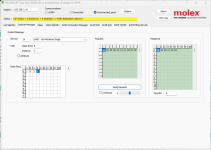JeremyM
Lifetime Supporting Member
Molex vs local message has me a little stumped by that and more - at no point did the former do anything but receive a partial list response.
Molex vs local message has me a little stumped by that and more - at no point did the former do anything but receive a partial list response.
Do you have each processor producing its own local list of IO that the concentrator later collects? Or is the concentrator doing all the querying and assembly?
If it's the latter, you might try hitting up Class 0x45 (Originator Connection List) on the production CPUs. This either became a thing with 5x80 or a firmware version of 5x70 and 5x80, but I don't have any 5x70 to test with. It's a dynamic class requiring you to first send a Create service request that responds with the new instance Id you'd use to begin parsing data with. Afterward, you send a Delete service request.
The curious thing about this class is that Logix processors won't answer queries to it from itself - they can only come from an external originator. The only workaround I could find was to add a "dummy" hop to a backplane I/O module.
It is interesting to see the Analog Output Group there. I will see what the message router says in my modules. Does the Analog Output Group respond to a CIP request? I read somewhere (in one of the many AB manuals, I don't remember which) that most CIP requests to IO cards will require a connected message, and that they will not respond to an unconnected message.

EDIT:
I am very fascinated that you got data back from the Discrete Input Point on 1734. This makes me think the data is available on the 5069 Analog Output Group. When I get some more time, I will attempt to query the 1756 IO for the Discrete Input Point to see if I can make anything happen. Just because the message router does not reply does not mean that the other classes will not.
